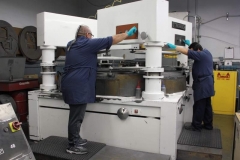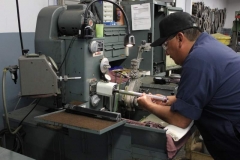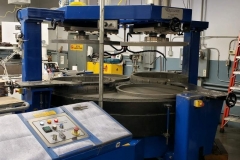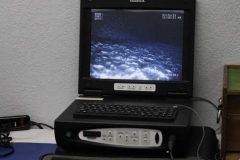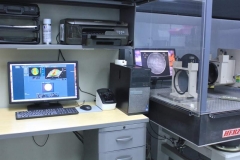Lapping Grinding Honing
Leveraging the quality of precision machined parts with superior surface finishing allows Armstrong Technology to beat the competition! Armstrong Technology is in a unique position to provide turnkey solutions for customers who's products require exact finishing.
Lapping
Utilizing an abrasive slurry and synthetic oil, lapping machines create a uniform flat surface on machine parts by moving the parts inside rotating rings on a stationary table. The lapping process is performed by machine or hand manipulation to make a surface very flat across the entire part. The consistency of the slurry and duration of processing vary depending on desired finish. Flatness of 10 to 20 millionths of an inch can be achieved. Our talented lapping personnel can create surface finishes on parts from a 32 down to a 2 finish. The laser interferometer verifies the surface flatness using laser technology. Armstrong Technology S.V., is one of the few machining facilities that can meet challenging surface requirements.
Surface Grinding
For customers that require machined parts with extreme flatness requirements. Our grinders will facilitate parts that fit the following sizes 20”x40”, 12” x 24”, 8”x18”, and 6”x18”. Armstrong Technology’s fully automated Chevalier surface grinders, and our experienced personnel can handle any precision grinding project. Armstrong Technology has been providing cost effective solutions for grinding requirements more than 30 years. Customers can be assured quality products whether, small lots, or high volume orders, our knowledgeable and dedicated staff will exceed expectations.
Honing
Honing is the process of grinding the interior diameter of cylindrical machined parts. Typically, precision machined parts are honed toward the end of the manufacturing process to achieve precise finishes. Interior diameters from .062 to 2” can be accommodated. Larger diameters are available with a tooling charge. Surface finishes and absence of burrs can be verified by the in-house borescope. The borescope can examine hole sizes as small as .150 of an inch.

